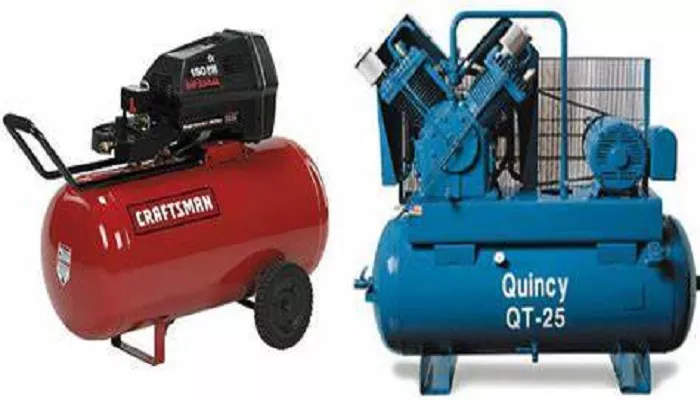Choosing the right air compressor for painting is crucial for achieving professional-quality results. Whether you’re an automotive painter, a DIY enthusiast, or a professional contractor, selecting the proper compressor can mean the difference between a flawless finish and a disappointing outcome. This comprehensive guide will walk you through all the technical considerations to help you make an informed decision.
Understanding Air Compressor Basics for Painting
Air compressors work by converting power into potential energy stored in pressurized air. For painting applications, this compressed air is used to atomize paint particles and deliver them evenly to the surface. The quality of your compressed air directly affects the quality of your paint job.
Painting requires clean, dry, and consistent air flow. Unlike other air tool applications that might tolerate pulsating air flow, painting demands steady pressure without fluctuations. Even minor pressure variations can cause noticeable differences in paint application, leading to uneven coverage or texture.
Types of Air Compressors Suitable for Painting
Piston (Reciprocating) Compressors
Single-stage compressors: These compress air in one stroke, typically reaching pressures up to 150 PSI. They’re suitable for smaller painting jobs and hobbyists.
Two-stage compressors: These compress air in two steps, allowing for higher pressures (up to 200 PSI) and more consistent airflow. Better for professional painting applications.
Rotary Screw Compressors
- Continuous air flow without pulsation
- Quieter operation than piston compressors
- Higher CFM output for their size
- Longer lifespan with proper maintenance
These are more expensive but preferred by professional paint shops for their consistent performance and durability.
Oil-Free vs. Oil-Lubricated Compressors
- They eliminate risk of oil contamination in paint lines
- Require less maintenance
- Are lighter and more portable
However, oil-lubricated models tend to last longer and run cooler, making them suitable for high-volume professional shops that can invest in proper filtration systems.
Key Specifications for Painting Compressors
CFM (Cubic Feet per Minute)
HVLP (High Volume Low Pressure) spray guns: Typically require 10-20 CFM
Conventional spray guns: May need 5-15 CFM
Automotive painting: Often requires 15-30 CFM for professional results
Always choose a compressor with CFM rating at least 1.5 times your spray gun’s requirement to account for air tool efficiency loss.
PSI (Pounds per Square Inch)
- Minimum 90 PSI working pressure
- 150 PSI maximum pressure is sufficient for most applications
- 175-200 PSI for professional automotive work
Tank Size
Small projects (touch-ups, furniture): 20-30 gallon tank
Automotive panels: 30-60 gallon tank
Full vehicle painting: 60-80 gallon tank or larger
Production shops: Multiple tanks or 120+ gallon capacity
Matching Compressor to Paint Gun Type
HVLP (High Volume Low Pressure) Systems
- Higher air volume (10-20 CFM)
- Lower pressure (10-30 PSI at the gun)
- Clean, dry air
- Compressor with good CFM at lower pressures
LVLP (Low Volume Low Pressure) Systems
- Less air (4-12 CFM)
- Similar pressure to HVLP
- Smaller compressors may suffice
Conventional Spray Guns
- Less air volume (5-15 CFM)
- Higher pressure (40-50 PSI at the gun)
- More precise pressure regulation
Additional Features for Painting Compressors
Air Dryers and Filters
Refrigerated dryers: Cool air to condense moisture
Desiccant dryers: Use absorbent materials to remove water vapor
Coalescing filters: Remove oil and microscopic particles
Pressure Regulators
- Dual-stage regulators for finer control
- Large gauges for easy reading
- Regulators at both compressor and gun
Multiple Outlets
- Running multiple guns simultaneously
- Adding auxiliary tools like sanders
- Future expansion
Professional vs. DIY Compressors
Professional-Grade Compressors
- Two-stage compression
- 100% duty cycle
- 80+ gallon tanks
- 15+ HP motors
- Industrial-grade filters
Hobbyist/DIY Compressors
- 1-5 HP motors
- 20-30 gallon tanks
- Oil-free designs
- Portable sizes
- 50-75% duty cycles
Noise Considerations
- Piston compressors: 70-90 dB
- Rotary screw: 60-75 dB
- Quiet models: Below 60 dB
- Remote mounting options reduce noise
Cost Considerations
Small DIY units: 100−500
Prosumer models: 500−1,500
Professional automotive: 1,500−5,000
Conclusion
Selecting the right air compressor for painting requires careful consideration of your specific needs, project types, and growth potential. For most automotive and professional applications, a two-stage piston compressor or rotary screw model with adequate CFM, proper filtration, and sufficient tank size will deliver the consistent, clean air needed for flawless paint application. DIY users can often get by with smaller, oil-free units but should still prioritize adequate CFM and air treatment. Remember that in painting, your compressor is just as important as your spray gun in determining finish quality.
Invest wisely in a system that meets your current needs while allowing for future expansion, and don’t neglect the essential accessories like dryers and filters that protect your air supply. With the right compressor setup, you’ll achieve professional results project after project.

